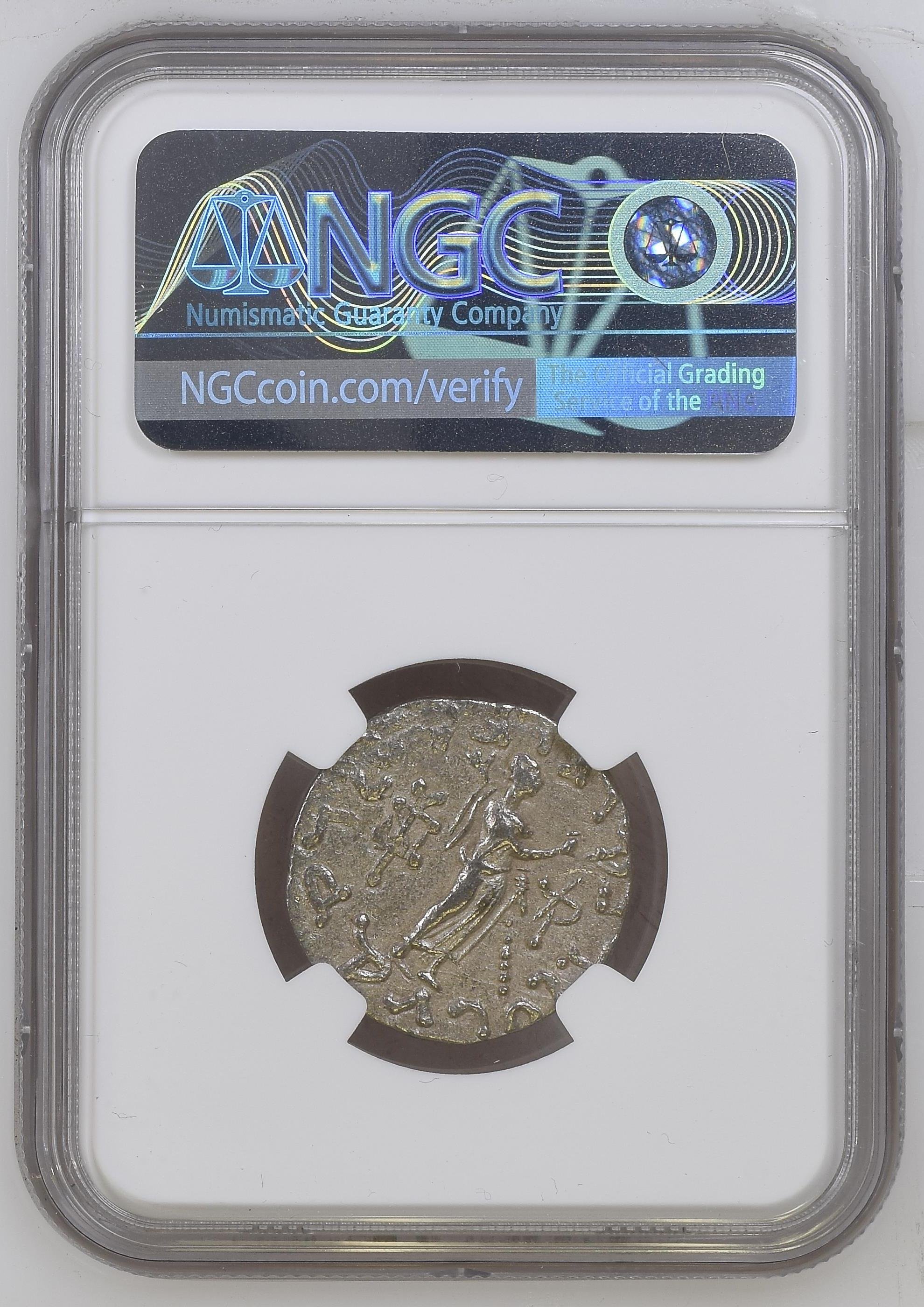 Image 1 of 2
Image 1 of 2

 Image 2 of 2
Image 2 of 2



Thracian Lion Hemidrachm (about 2400-2350 years ago)
This silver hemidrachm comes from the ancient Greek colony of Cherronesos (or Chersonesos) on the Thracian peninsula, an important trading settlement controlling access to the Black Sea.
Coin Description:
Front side: The forepart (front half) of a lion facing right with its head turned backward (reverted)
Back side: Quadripartite incuse square with alternating raised and sunken quarters; in two of the sunken quarters there is an "AF" monogram positioned above a pellet, and a bee
Technical Details:
Silver composition
Hemidrachm denomination (half a drachm)
Weight: 2.41 grams
References: Weber-2409, 2428 variant; McClean-4090 correction (bee); SNG Copenhagen-832 variant
Date/period: 400-350 BCE
Historical Significance:
This coin was minted during the late Classical period of Greek history, when the Thracian Chersonese (modern Gallipoli Peninsula in Turkey) was a strategically vital region. The peninsula controlled maritime traffic between the Aegean and Black Seas through the Hellespont (now called the Dardanelles). The lion was a popular motif on Greek coinage, symbolizing strength and power, while the bee might represent the colony's agricultural prosperity or connection to religious cults. This coin reflects the city's economic importance during a time when Athens, Sparta, and later Macedon competed for influence in the region.
This silver hemidrachm comes from the ancient Greek colony of Cherronesos (or Chersonesos) on the Thracian peninsula, an important trading settlement controlling access to the Black Sea.
Coin Description:
Front side: The forepart (front half) of a lion facing right with its head turned backward (reverted)
Back side: Quadripartite incuse square with alternating raised and sunken quarters; in two of the sunken quarters there is an "AF" monogram positioned above a pellet, and a bee
Technical Details:
Silver composition
Hemidrachm denomination (half a drachm)
Weight: 2.41 grams
References: Weber-2409, 2428 variant; McClean-4090 correction (bee); SNG Copenhagen-832 variant
Date/period: 400-350 BCE
Historical Significance:
This coin was minted during the late Classical period of Greek history, when the Thracian Chersonese (modern Gallipoli Peninsula in Turkey) was a strategically vital region. The peninsula controlled maritime traffic between the Aegean and Black Seas through the Hellespont (now called the Dardanelles). The lion was a popular motif on Greek coinage, symbolizing strength and power, while the bee might represent the colony's agricultural prosperity or connection to religious cults. This coin reflects the city's economic importance during a time when Athens, Sparta, and later Macedon competed for influence in the region.
This silver hemidrachm comes from the ancient Greek colony of Cherronesos (or Chersonesos) on the Thracian peninsula, an important trading settlement controlling access to the Black Sea.
Coin Description:
Front side: The forepart (front half) of a lion facing right with its head turned backward (reverted)
Back side: Quadripartite incuse square with alternating raised and sunken quarters; in two of the sunken quarters there is an "AF" monogram positioned above a pellet, and a bee
Technical Details:
Silver composition
Hemidrachm denomination (half a drachm)
Weight: 2.41 grams
References: Weber-2409, 2428 variant; McClean-4090 correction (bee); SNG Copenhagen-832 variant
Date/period: 400-350 BCE
Historical Significance:
This coin was minted during the late Classical period of Greek history, when the Thracian Chersonese (modern Gallipoli Peninsula in Turkey) was a strategically vital region. The peninsula controlled maritime traffic between the Aegean and Black Seas through the Hellespont (now called the Dardanelles). The lion was a popular motif on Greek coinage, symbolizing strength and power, while the bee might represent the colony's agricultural prosperity or connection to religious cults. This coin reflects the city's economic importance during a time when Athens, Sparta, and later Macedon competed for influence in the region.
Chersonesus,[a] contracted in medieval Greek to Cherson (Χερσών), was an ancient Greek colony founded approximately 2,500 years ago in the southwestern part of the Crimean Peninsula. Settlers from Heraclea Pontica in Bithynia established the colony in the 6th century BC.
The ancient city was located on the shore of the Black Sea on the outskirts of present-day Sevastopol on the Crimean Peninsula, where it is referred to as Khersones. The site is part of the National Preserve of Tauric Chersonesos. The name Chersonesos in Greek means "peninsula" and aptly describes the site on which the colony was established. It should not be confused with the Tauric Chersonese, a name often applied to the whole of the southern Crimea.
During much of the classical period, Chersonesus operated as a democracy ruled by a group of elected archons and a council called the Demiurgoi. As time passed, the government grew more oligarchic, with power concentrated in the hands of the archons.[1] A form of oath sworn by all the citizens from the 3rd century BC onwards has survived to the present day.[2][3] In 2013 UNESCO listed Chersonesus as a World Heritage Site.[4]
You Might Also Like










